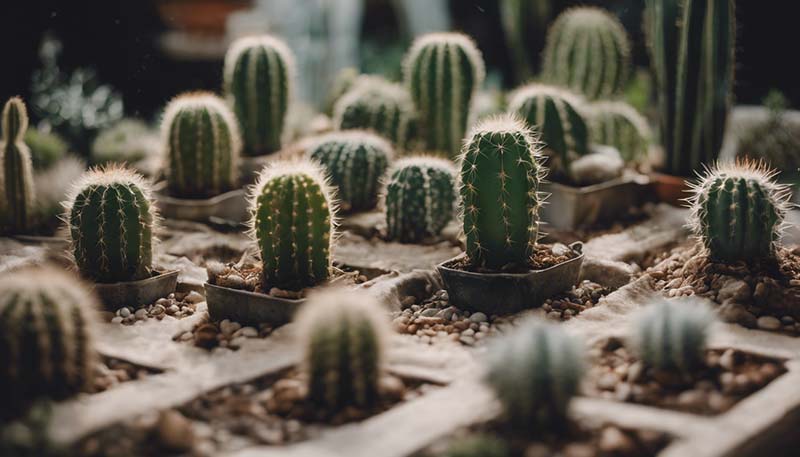Cacti are popular houseplants due to their low-maintenance nature and unique aesthetic appeal. They can add a touch of the desert to your home decor and are perfect for those who may not have a green thumb. Growing an indoor cactus garden can be a rewarding experience, and with the right care, your cacti can thrive indoors. Here's a guide to help you get started:
## 1. Choose the Right Cacti
There are thousands of cactus species, each with its own unique characteristics. When selecting cacti for your indoor garden, consider the following:
- **Size**: Some cacti can grow quite large, so consider the space you have available.
- **Light Requirements**: Most cacti need plenty of sunlight, but there are species that can tolerate lower light conditions.
Advertisement
- **Hardiness**: Some cacti are more forgiving of neglect or less-than-ideal conditions.
## 2. Select Appropriate Containers
- **Drainage**: Ensure your pots have drainage holes to prevent waterlogging.
- **Material**: Terracotta pots are breathable and good for cacti, but glazed pots can also be used if they have proper drainage.
## 3. Use Well-Draining Soil
Cactus soil is specially formulated to be well-draining and to provide the right nutrients. You can buy pre-made cactus mix or make your own by combining regular potting soil with sand or perlite.
## 4. Proper Placement
Place your cactus garden in a spot that receives plenty of sunlight. South-facing windows are ideal. If natural light is insufficient, consider using grow lights.
## 5. Watering Tips
- **Frequency**: Water your cacti sparingly. Overwatering is a common mistake and can lead to root rot.
- **Amount**: Water until the water drains out of the bottom of the pot. Allow the soil to dry out completely before watering again.
## 6. Temperature and Humidity
Cacti prefer warmer temperatures and low humidity. Most indoor environments are suitable, but avoid placing your cacti near heating vents or drafty windows.
## 7. Fertilizing
During the growing season (spring and summer), you can fertilize your cacti with a special cactus fertilizer. Follow the instructions on the fertilizer package for application rates and frequency.
## 8. Repotting
Cacti do not need to be repotted often. You might need to do so if the plant outgrows its pot or if the soil has become compacted. Choose a pot that is only slightly larger than the current one.

## 9. Pest Control
Keep an eye out for common pests like mealybugs and spider mites. Use a cotton swab dipped in rubbing alcohol to remove them if you spot any.
## 10. Pruning and Propagation
Prune your cacti to maintain their shape and size. You can also propagate new plants from cuttings or offsets, depending on the species.
## 11. Be Patient
Cacti grow slowly, so be patient and enjoy the process of watching your indoor garden develop over time.
## 12. Experiment with Arrangement
Create a visually appealing arrangement by combining cacti of different sizes and shapes. You can also use decorative rocks, shells, or small figurines to enhance your cactus garden's appearance.
## Conclusion
Growing an indoor cactus garden can be a fun and rewarding hobby. With the right care and attention, your cacti will not only survive but thrive, adding a unique and beautiful element to your indoor space. Remember, the key to success with cacti is to mimic their natural desert environment as closely as possible within your home.
Comment